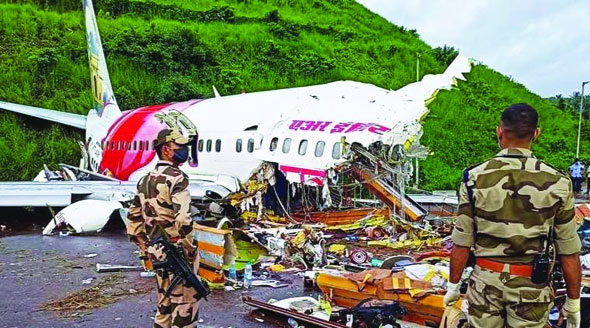The crash of an Air India Express Boeing 737 at Kozhikode is an unfortunate disaster but could it have been avoided?
Indian air crash investigators examining the wreckage of Air India Express flight 1344, a Vande Bharat Mission flight from Dubai to Kozhikode, are likely to have witnessed similar scenes just a few short years ago. Another Air India Express Boeing 737-800 overran a runway at Mangalore airport, just a few hundred kilometres north of the current site. Thankfully, while that crash saw few survivors, it appears that, at the time of writing, a large majority of the passengers on board this plane survived the slide down the end of the runway. This is probably because the pilot turned off the engine to avert fire. Investigators will have several tools at their disposal from weather reports, radar displays and even the plane’s own Cockpit Voice Recorder and Flight Data Recorder. However, the similarities between the two accidents bring to mind the risks of operating at such “tabletop” airports. Both Kozhikode and Mangalore airports are carved into the Western Ghats, leaving pilots little room for error. The information available at this time has revealed that the pilot had already made one missed approach to the airport. Landing in the monsoon in India, when runways are wet, is always a risk and runway “excursions” are common due to the lower braking action available on the slippery tarmac, as any motorist on the roads would be quite aware of. While Kozhikode airport’s runway was clearly long enough at 9,000 feet for a Boeing 737 to land safely in most conditions, the distance needed for a landing in extremely wet conditions with a tailwind might have been an ask too far for the aircraft. And unlike Cochin airport, a hundred or so kilometres to the south, this one, by its very layout on the top of a plateau, had little runoff area and no soft concrete surface at the end of a runway for planes to sink into. Now that the crash has happened, every oversight and lapse is being called into account. As it turns out, civil aviation experts had warned of the airport’s risk factors about nine years ago. In a letter sent on June 17, 2011, to the then director-general of civil aviation, Capt Mohan Ranganathan wrote, “An aircraft landing on runway 10 in tailwind will experience poor braking action due to heavy rubber deposits … All such flights … are endangering the lives of all on board.’’ While no accident happened until now, the report got buried. Even now the Government has claimed that hundreds of flights have landed there in the recent past, overlooking the need to reassess the lay of the land.
There are six tabletop runways in India where landing flights is somewhat difficult as there is no additional space on the runway. Since there are many issues pertaining to safety of aircraft, crew and passengers, many international flights and Airbus A330 and Boeing 777 do not land at these airports. The Kozhikode airport’s runway end safety area was expanded in 2018 to accommodate wide-body aircraft. Though it meets United Nations international civil aviation requirements, the agency recommends a buffer that is 150 metres longer than what exists at Kozhikode airport. Some reports also suggest a laxity about routine tests. Apparently no friction test was done at the airport, as is mandatory on runways and taxiways, especially those affected by rains. Flying in India has been incredibly safe over the past decade even as air traffic has exploded with hundreds of new aircraft and millions of first-time passengers. But air travel, while being inherently safe, does have an ability to shock us when something goes wrong. One expects this accident to be thoroughly investigated and faults if any to be rectified, even if that means closing down of certain airports in India or restricting large jet aircraft from flying there. Ranganathan has flagged Patna and Jammu airports as accident-prone and sitting ducks that need immediate upgrades. Aviation is a vitally important transportation option in a country as large as India where millions make their living outside Indian shores. The safety and security of this industry is not only of paramount importance but also a strategic necessity for this nation.


























